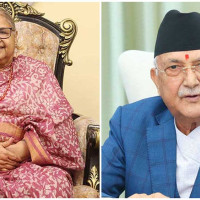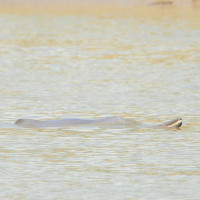- Friday, 9 January 2026
Development banks, finance companies seek access to deposit and credit funds
Kathmandu, Feb. 5: The Deposit and Credit Guarantee Fund (DCGF) raises deposit and loan guarantee fees from all banks and financial institutions (BFIs) but its financial resources are available only to the commercial banks.
Terming this discrimination a serious ‘policy flaw’, the development banks and finance companies – class ‘B’ and ‘C’ institutions licensed by the Nepal Rastra Bank (NRB) – have demanded a proportional share in the financial resources at the DCGF.
DCGF is an institution that runs a system to protect depositors against the loss of their guaranteed deposits placed with BFIs in case of unlikely event of the BFIs’ failure, and guarantees against loan issued to an individual or institution.
According to the Deposit and Credit Guarantee Fund Act, 2016, BFIs licensed by the NRB should take membership of guaranteed member institution from the Fund. It means all commercial banks, development banks, finance companies and microfinance institutions mobilising deposits should mandatorily get registered at the Fund and regularly pay the fees – including 0.5 per cent of the proposed paid-up capital as the initial contribution to the Fund to receive the certificate of guaranteed member institution.
As per this provision, a national-level development bank having paid-up capital of Rs. 2.5 billion should pay Rs. 12.5 million as initial fee and 0.16 per cent (Rs. 4 million) per annum. There are three grades of development bank – national level, operating in 4-10 districts and maximum 3 districts – and their paid-up capital also varies. Likewise, a national level finance company with paid-up capital of Rs. 800 million has to pay Rs. 40 million as registration fee and Rs. 1.2 million in annual charges to the DCGF.
Term deposits to commercial banks
The investment of financial assets of the DCGF is made on the securities or debt instrument as well as uncompetitive auction transaction of securities issued by the government or NRB, term deposit at the central bank, and term deposits at ‘A’ class commercial banks operating at profit for five consecutive years.
This provision inscribed in the law has deprived the development banks and financial institutions from the opportunity to get support during the shortage of liquidity. Spokesperson of the DCGF, Binod Pant, said that the BFIs must mandatorily guarantee their deposits while insuring loan is optional. The size of fund at the DCGF has reached about Rs. 20 billion. Of this amount, only Rs. 350 million is invested in government issued development bonds while the rest is deposited in ‘A’ class banks.
As a result, class ‘B’ and ‘C’ banks and financial companies don’t have the opportunity to raise the money they paid for the deposit and credit guarantee.
Twenty-two commercial banks, 17 development banks, 16 finance companies and two microfinance companies – having the rights to mobilise deposits – are the members of the DCGF. In the first half of the current fiscal year 2022/23 (mid-January 2023), the Fund has raised Rs. 379.1 million in guarantee fee from commercial banks, Rs. 53.4 million from development banks, Rs. 8.1 million from finance companies and Rs. 482,678 from two microfinance companies having deposit rights – Nirdhan Uththan Bank Limited and Chhimek Laghubitta Bikas Bank Limited.
According to the statistics, the class ‘B’ and ‘C’ institutions have about 13.95 per cent (Rs. 61.5 million) share to the total premium, Rs. 441.2 million, collected by the DCGF in the first half of this year.
No law to distribute fund
According to Pant, class ‘B’ and ‘C’ banks and finance companies have not demanded their share in the financial resources accumulated at the Fund. “Only a couple of CEOs of development banks and finance companies have suggested we distribute the deposits also to the BFIs other than the commercial banks. Since the law doesn’t allow us to do so, we haven’t initiated any process in this regard,” he said.
The central bank also cites the same legal provision and puts the responsibility of accommodating BFIs other than the commercial banks to the Fund.
However, chief executive officer of a development bank said that the DCGF has been citing the legal provision as an obstacle to the distribution of its fund in term-deposit to them. “Many development banks and finance companies don’t ask to the Fund to have an opportunity to mobilise the money thinking that it wouldn’t give anyway. We don’t get a chance to bid for it,” he said, adding that they are ready to bid for the term deposit of the DCGF money.
He said that the NRB failed to play a proactive role in facilitating to amend the provision to distribute the benefits to all the BFIs.
The demand to have deposits from the DCGF has got prominence during the last one and a half years when the entire financial system experienced a severe liquidity crisis.
President of Nepal Financial Institution Association, Saroj Kaji Tuladhar, maintained that there was no formal demand from them to the DCGF about the opportunity in mobilising the latter’s resources in which they also have contributed.
However, the practice to have large amount of institutional fixed deposit may develop a culture to make rounds of such investors at the cost of small depositors who actually help to run the financial institution, said Tuladhar. But he maintained that the facility should be provided to the development banks and finance companies which want to avail it.
Impact on interest rates
Experts say that the commercial banks are finding it hard to bring down the interest rate also because of the institutional term deposit which they have been able to secure by promising a high interest rate to their customers. Some large depositors include welfare funds of Nepal Army, Nepal Police, Armed Police Force, Employees Provident Fund, Citizens Investment Trust, insurance companies, and Hydropower Investment and Development Company Limited.
The same is the case with the insurance. The CEO of a finance company said that real estate loan, hire purchase loan, machinery and business loan and hydro loan are insured at various companies but reinsurance companies don’t include the class ‘C’ institutions in term-deposit opportunities.
The DCGF has separate funds – deposit guarantee fund and credit guarantee fund. In deposit guarantee 100 per cent compensation is made. Such compensation is made after a formal notice from the NRB citing a BFI (member of DCGF) is in problem and is unable to make payment of deposits of guaranteed depositors, in the process of financial liquidation, or winding up, mentions the Deposit and Credit Guarantee Fund Act, 2016.
However, guarantee is provided for the deposits of only up to Rs. 500,000. But it is applicable to every account opened in separate institutions by an individual. For example, if an individual has maintained five different accounts in five BFIs, he/she would be entitled of a guarantee of Rs. 2.5 million.
70-89% credit guarantee
But in case of credit guarantee, 70-90 per cent compensation is made according to the product purchased. The DCGF has five credit guarantee programmes – microfinance and deprived sector credit guarantee, agricultural credit guarantee, educational credit and educated unemployment business credit guarantee, small and medium enterprises (SMEs) credit guarantee, and livestock guarantee.
Microfinance and deprived sector credit guarantee includes up to Rs. 1 million and offers 75 per cent compensation. BFIs have to pay 1 per cent of the loan amount each year in premium.
Agricultural credit guarantee is made up to Rs. 20 million with 70-80 per cent compensation provision. BFIs should pay 0.6 per cent of the loan amount per annum.
Likewise, educational credit and educated unemployment business credit guarantees Rs. 1 million and 500,000 respectively. It compensates 80 per cent of the loan to a BFI and demands 1 per cent of the loan to be submitted to the DCGF every year.
SME credit guarantee has a limit up to Rs. 20 million with 0.6 per cent premium and 70-90 per cent indemnity provision. Similarly, livestock guarantee covers Rs. 150,000 in case of large livestock and Rs. 30,000 for small ones. It provides 90 per cent compensation in case of death and 50 per cent in case of unproductivity. This product has the highest premium fee with 6 per cent of the loan amount.












-original-thumb.jpg)



